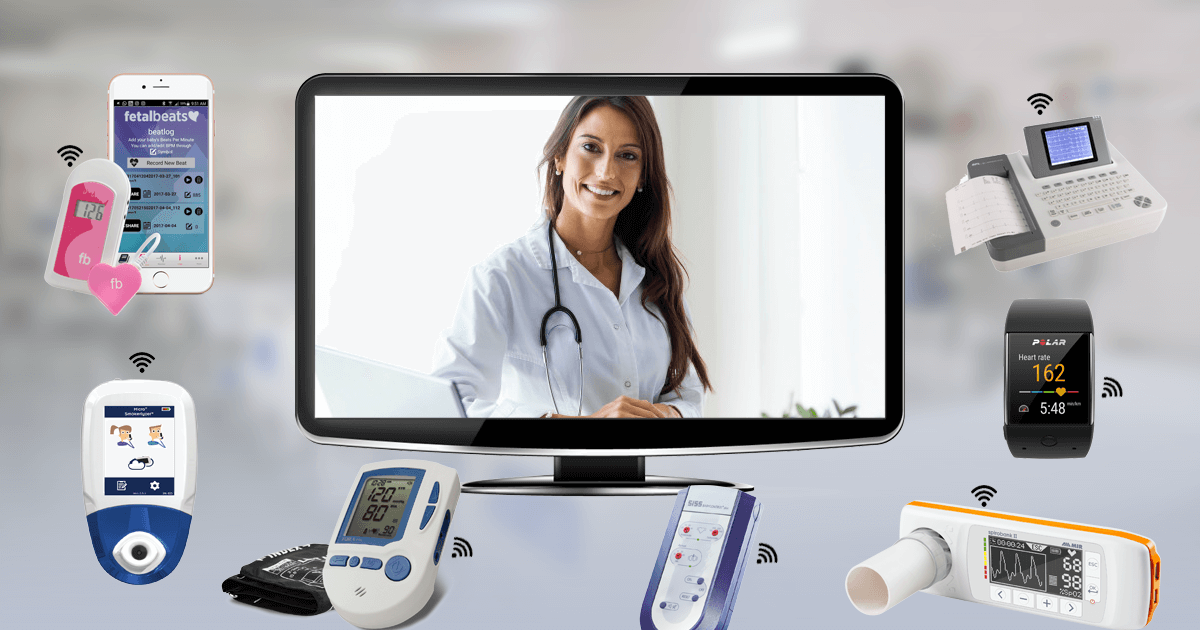Remote patient monitoring (RPM) has emerged as a groundbreaking technology-driven solution to enhance healthcare accessibility, improve patient outcomes, and optimize healthcare delivery. By leveraging connected devices, sensors, and digital health platforms, RPM enables healthcare providers to monitor patients’ vital signs, symptoms, and health metrics remotely, outside of traditional healthcare settings. This innovative approach to patient care empowers individuals to manage chronic conditions, recover from acute illnesses, and receive timely medical interventions from the comfort of their homes. In this comprehensive guide, we delve into the world of remote patient monitoring, explore its benefits and applications, and illuminate its transformative potential in revolutionizing healthcare delivery.
Understanding Remote Patient Monitoring
Remote patient monitoring (RPM) involves the use of digital health technologies to collect, transmit, and analyze patient-generated health data (PGHD) from remote locations. RPM enables healthcare providers to monitor patients’ physiological parameters, such as blood pressure, heart rate, blood glucose levels, oxygen saturation, and weight, in real-time, allowing for early detection of health changes, timely interventions, and proactive management of chronic conditions.
Key Components of Remote Patient Monitoring
1. Connected Devices and Sensors
Remote patient monitoring relies on connected devices and sensors, such as wearable fitness trackers, blood pressure cuffs, glucometers, pulse oximeters, and smart scales, to capture and transmit patient health data securely to healthcare providers. These devices enable continuous monitoring of vital signs and health metrics, providing valuable insights into patients’ health status and trends over time.
2. Digital Health Platforms
Digital health platforms serve as the central hub for remote patient monitoring, facilitating the collection, transmission, storage, and analysis of patient-generated health data (PGHD). These platforms integrate with electronic health record (EHR) systems, enabling seamless communication and collaboration between patients, healthcare providers, and care teams. Digital health platforms also support remote consultations, medication management, patient education, and care coordination, enhancing the efficiency and effectiveness of healthcare delivery.
3. Data Analytics and Decision Support
Data analytics and decision support tools play a crucial role in remote patient monitoring, enabling healthcare providers to analyze and interpret patient health data, identify patterns and trends, and make informed clinical decisions. Advanced analytics algorithms can detect deviations from baseline health parameters, predict health deterioration, and trigger alerts or interventions when necessary, enhancing patient safety and clinical outcomes.
Benefits of Remote Patient Monitoring
1. Improved Patient Outcomes
Remote patient monitoring has been shown to improve patient outcomes by enabling early detection of health changes, timely interventions, and proactive management of chronic conditions. By monitoring patients’ vital signs and health metrics remotely, healthcare providers can identify potential health risks, adjust treatment plans, and prevent complications, leading to better clinical outcomes and reduced hospitalizations.
2. Enhanced Patient Engagement and Empowerment
Remote patient monitoring promotes patient engagement and empowerment by involving patients in their care, providing them with real-time access to their health data, and encouraging self-management behaviors. Patients can track their progress, monitor their symptoms, and make informed decisions about their health with the support of their healthcare providers, fostering a sense of ownership and autonomy in managing their health.
3. Optimized Healthcare Delivery
Remote patient monitoring optimizes healthcare delivery by enabling more efficient and effective use of healthcare resources, reducing unnecessary healthcare utilization, and improving care coordination and continuity. Healthcare providers can prioritize high-risk patients, allocate resources more effectively, and deliver proactive, personalized care to patients based on their individual needs and preferences, leading to greater efficiency and cost savings in healthcare delivery.
Applications of Remote Patient Monitoring
1. Chronic Disease Management
Remote patient monitoring is particularly valuable for managing chronic diseases, such as diabetes, hypertension, heart failure, and chronic obstructive pulmonary disease (COPD). By monitoring patients’ vital signs, symptoms, and medication adherence remotely, healthcare providers can optimize disease management, prevent exacerbations, and empower patients to better self-manage their conditions, improving clinical outcomes and quality of life.
2. Post-Acute Care and Rehabilitation
Remote patient monitoring supports post-acute care and rehabilitation by enabling healthcare providers to monitor patients’ recovery progress, functional status, and adherence to treatment plans remotely. Patients recovering from surgery, injury, or illness can receive personalized support, rehabilitation exercises, and medication management guidance from their healthcare providers, facilitating a smoother transition from hospital to home and improving recovery outcomes.
3. Aging in Place and Telehealth
Remote patient monitoring enables aging adults to age in place safely and independently by providing continuous monitoring of their health status and functional abilities. Telehealth visits, remote consultations, and virtual care delivery allow older adults to access healthcare services from the comfort of their homes, reducing the need for frequent hospital visits and improving access to medical care for aging populations.
Conclusion
In conclusion, remote patient monitoring represents a transformative approach to healthcare delivery that leverages technology to enhance accessibility, improve patient outcomes, and optimize healthcare delivery. By enabling healthcare providers to monitor patients’ vital signs, symptoms, and health metrics remotely, outside of traditional healthcare settings, remote patient monitoring empowers individuals to manage chronic conditions, recover from acute illnesses, and receive timely medical interventions from the comfort of their homes. Whether you’re managing a chronic condition, recovering from surgery, or aging in place, remote patient monitoring offers a personalized, proactive approach to healthcare that prioritizes patient-centered care, promotes patient engagement, and enhances overall well-being.





